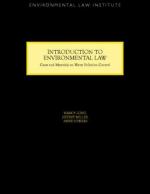|
This section contains 639 words (approx. 3 pages at 300 words per page) |

|
With respect to microorganisms, water pollution refers to the presence in water of microbes that originated from the intestinal tract of humans and other warm-blooded animals. Water pollution can also refer to the presence of compounds that promote the growth of the microbes. The remediation of polluted water--the removal of the potentially harmful microorganisms--or the reduction of their numbers to levels considered to be acceptable for whatever purpose the water is used, represents the purification of water.
Microorganisms that reside in the intestinal tract find their way into fresh and marine water when feces contaminate the water. Examples of bacteria that can pollute water in this way are Escherichia coli, Salmonella, Shigella, and Vibrio cholerae. Warm-blooded animals other than humans can also contribute protozoan parasites to the water via their feces. The two prominent examples of health relevance to humans are Cryptosporidium...
|
This section contains 639 words (approx. 3 pages at 300 words per page) |

|


